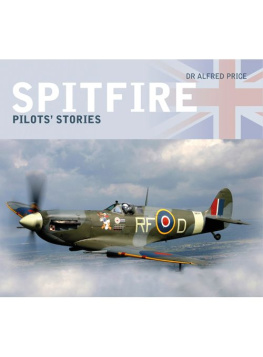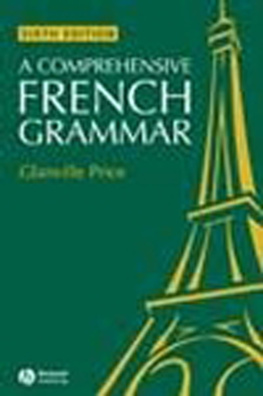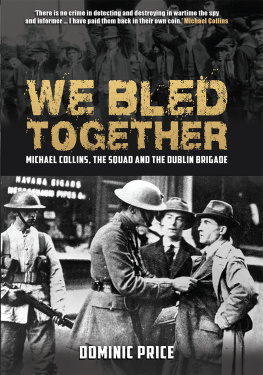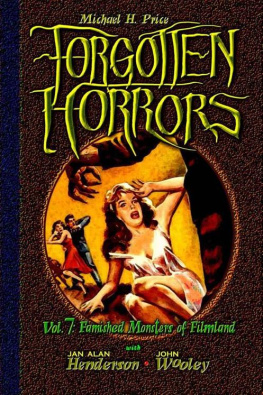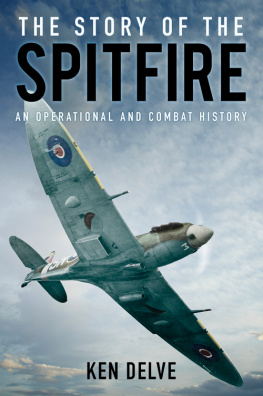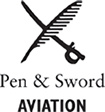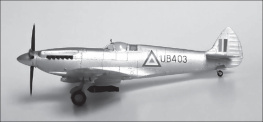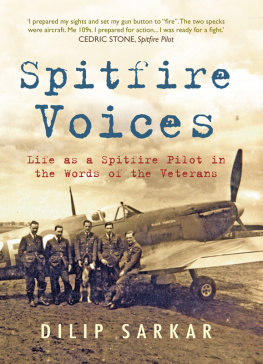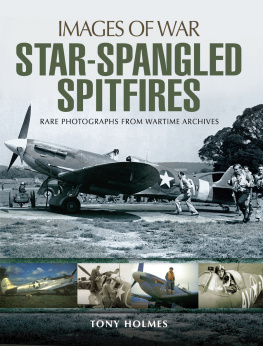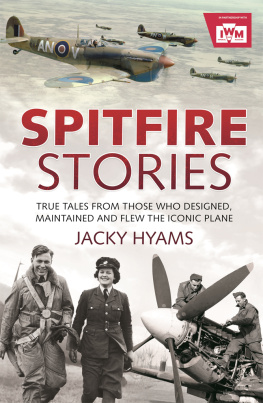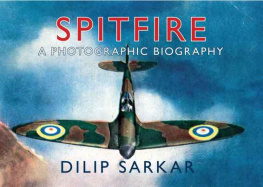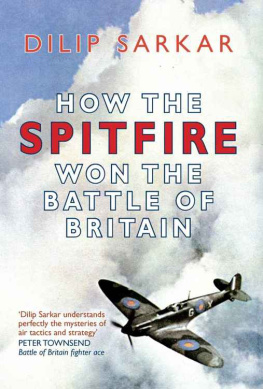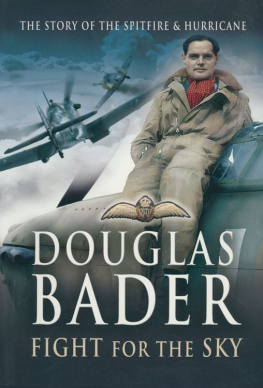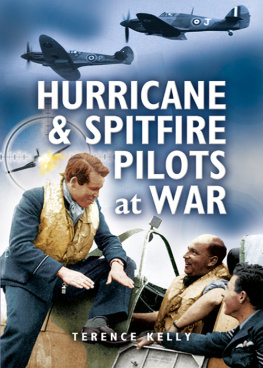

Press Day at Duxford, 4 May 1939, and a chance for No. 19 Squadron to show off its new equipment. By then the squadron number on the fin had given way to the units WZ code-letters on the fuselage.

Henry Cozens leading six of No. 19 Squadrons new Spitfires in formation for the benefit of an official photographer aboard a Blenheim. The squadron number had been painted on the fighters tails shortly before this flight, and it would be removed soon afterwards. (If you count only five Spitfires, there is another hidden behind the fourth in order away from the camera.)
CONTENTS
M y aim in writing this book has been to set down, for posterity, a selection of accounts taken from the transcripts of the numerous interviews I conducted with Spitfire pilots. I have long believed the adage that if you really enjoy doing a task, you cannot reasonably call it work, and for me, writing this book was certainly not work. How could it be, when it was an honour to be in the presence of the interviewees? I was then able to speak to them individually and seek answers to my detailed questions. For an aviation writer and enthusiast, life doesnt get any better than that.
Without exception, the pilots interviewed for this book relate that Reginald Mitchells little fighter was a sheer delight to fly. Its responsiveness to the controls was legendary, like pulling on a pair of gloves was the most repeated description, and those same pilots also spoke of their association with the Spitfire with pride and infectious enthusiasm. No form of warfare can be ever regarded as clean, but surely one of the least dirty is that of the fighter pilot who sallies forth into the sky to defend his homeland and protect his loved ones.
Last but by no means least, I should like to acknowledge the invaluable assistance I received from John Page and Graham Homan, who gave freely of their time and expertise in the preparation of this work.
Alfred Price,
Uppingham, Rutland
by Wing Commander R.R. Stanford-Tuck DSO DFC (19161987)
This foreword was originally written for the authors 1974 volume, which included a selection of the stories included in this collection.

W hen Alfred Price invited me to write a foreword for this book I was, of course, honoured; but I had the passing thought Oh dear, another air book to wade through. My fears were quite unfounded. As soon as I had read the first few pages I was held by it and read on almost non-stop till I had finished with Maffres excellent Spitfire Swansong.
I think the average member of the public during the war thought of Spitfire pilots as being carefree, beer-swilling types, rather like the rugger club members one could see being very noisy in any pub on a Saturday night. In fact, with a very few exceptions, nothing could have been further from the truth. Wartime flying and especially air combat in Spitfires was a very cold, calculating, cat and mouse affair. Woe betide any fighter pilot who was casual or who daydreamed he would very soon cop it up the back end, or one of his pals would. However, in spite of their deadly business, the Spitfire pilots had one great advantage, their aircraft, which they came to love in that strange way that men will love their cars or boats. I got my hands on a Spitfire for the first time on a crisp morning in December 1938. It belonged to No. 19 Squadron at Duxford. From the first moment I sat in the cockpit, going through all the instruments, cockpit checks, take-off and landing procedures etc., I thought If it comes to a war, this is the girl for me. Later that day, after my first flight, I felt this even more and for the first time in any aircraft I felt I was really part of it.
Just over a year later the tremendous thrill of getting my first Me 109 over Dunkirk justified my high opinion of the handling and fighting qualities of the Spitfire. As the years went past she carried me through countless combats and difficult situations and gave of her utmost every time it was demanded. She was a true thoroughbred.
I was so enthralled reading this book and recalling the memories it brought back of the airmen I had known, the flying, and the wonderful spirit which existed in those years, that I was very tempted to write considerably more; but that is not my part in this book. All I can say, with sincerity, is that this is a fine book about a fine aircraft and fine men, and I add my thanks to Alfred Price for asking me to write these few words.
T he year 1931 saw the Supermarine Aircraft Works at Southampton riding the crest of a wave, firmly established as a world leader in the design and production of high-speed racing seaplanes. In September of that year the Supermarine S.6B won the coveted Schneider Trophy outright for Britain, with a flight round the circular course at an average speed of 340mph. A few months later a sister aircraft advanced the world absolute speed record to 379mph. Later still in that same year, an S.6B with a modified Rolls-Royce R engine raised the world absolute speed record to 407mph.To realise any of those feats in a single year would have been a magnificent achievement for any aviation company, but to accomplish all three was an absolute triumph for Supermarine and its talented Chief Designer, Reginald Mitchell.
Yet although the design and production of the racing floatplanes had advanced the cause of high-speed flight, it would take some years before the various lessons could be incorporated in service equipment for the RAF. The racing seaplanes had been tailor-made to perform one specific task achieving the highest possible speed over the measured course, and alighting on the water safely afterwards. Little else mattered. These aircraft had short endurance, poor manoeuvrability and very poor visibility for the pilot in his cramped cockpit. Also, since the RAF had won the Schneider Trophy outright, there was no chance of anyone else running a challenge in the foreseeable future.
After the excitements of the previous year, the focus of the companys workforce returned to the production of the Southampton, Scapa and Stranraer twin-engined, long-range maritime patrol flying boats, to meet orders for the RAF and foreign air forces. Also in the autumn of 1931, and with a good deal less fanfare than had attended the activities of the racing floatplanes earlier in the year, the Air Ministry in London issued Specification F.7/30 for a new fighter type to equip its home defence squadrons. At that time the fastest fighter in the RAF inventory was the Hawker Fury, a biplane with a maximum speed of 207mph. As aviation experts pointed out, when the Fury reached its maximum speed in level flight it was flying at barely half as fast as the Supermarine S.6B had gone during its final record-breaking run.
Those who drafted the specification for the new fighter did not specify exact performance or other requirements. Instead, the various design teams were told to meet certain minimum requirements and do the best they could offer in terms of speed. The F.7/30 laid down the following requirements for the new fighter:
The highest possible rate of climb
The highest possible speed above 15,000 feet (ft)
Next page
